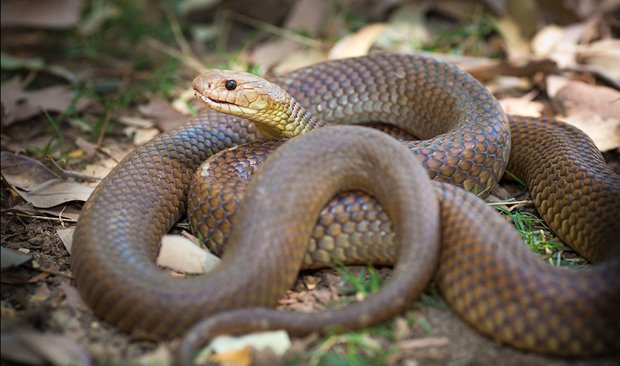How to stay safe throughout snake season

Spring is an exciting time at the zoo. But, unlike the general public who adore the plethora of baby animals, our reptile keepers are excited for a whole different reason. Spring is the beginning of snake season. For some people this may sound like a nightmare, but it is actually a sign of a healthy and thriving ecosystem.
We often get reports from members of public – usually at the beginning of spring – that snake numbers have dramatically increased. This is not the case. With the warmer weather on the way, snakes spring into action, moving onto greener pastures where food, mates or a nice warm place to rest will often find them in close contact with humans.
It is pretty rare for a snake to stay in the same spot for too long, unless the conditions are perfect. There are a few things you can do to reduce the chance of running into these beautiful creatures, if you so choose.

- Make your house and property less attractive to snakes. Remove any debris or woodpiles, cut back long grass and shrubbery, remove leaf litter and block any holes around the outside of your house that may look like a safe spot to hide.
- Keep pests under control. Rodents are a good food source for snakes – less food means less snakes.
- Bird aviaries and chook pens can be very attractive to snakes. Keep your enclosure secure, clean and free of rodents. Ensure you have a fine mesh or shade cloth around the outside of any aviary so our snake friends don’t get stuck in the wire.
- Keep your pets safe. Unfortunately, our pets don’t deter snakes. If possible, keep cats inside (and protect our native wildlife in the process), and snake avoidance training for dogs can literally be a life saver.
- Check twice (if you can do so safely!). Often, blue-tongue lizards and other lizard species get mistaken for their long lost snake cousins. Lizards are a gardeners’ best friend and are a welcome visitor in your yard. Legs, ears, eyelids and a broad tongue are good indicators that you’ve got a mini, snail destroying Godzilla in your yard.
- Call a professional. Never attempt to catch or kill a snake. This is illegal and snakes are incredibly important to the local ecosystem. There are a lot of great snake catchers who will safely and humanly relocate your new friend.
- Snake identification can be tricky. A snake that is brown in colour may not be an eastern brown snake. If someone does get bitten by a snake, it is not necessary to catch or kill the snake first. Perform first aid and go straight to the hospital. If the bite is from a venomous snake, the hospital can test the bite site to determine who the culprit is and treat the patient accordingly.
- Stay up to date with current snake bite first aid for humans and pets and keep a snake bite kit on hand. If you still think sucking the venom from a snake bite is the correct first aid, it might be time for a refresher…
- Lastly, if you are ever lucky enough to see one of our scaled friends, don’t panic. Back away to a safe distance. Your unexpected visitor will move on because, contrary to popular belief, snakes don’t want anything to do with people. A snake will only bite if it feels threatened; they are much smaller than we are and a bite or a strike is their only defence if they can’t get away first.
READ MORE:
- Everything you need to know about snakes.
- Australia’s 10 most dangerous snakes.
- Top 10 most venomous animals in Australia.

